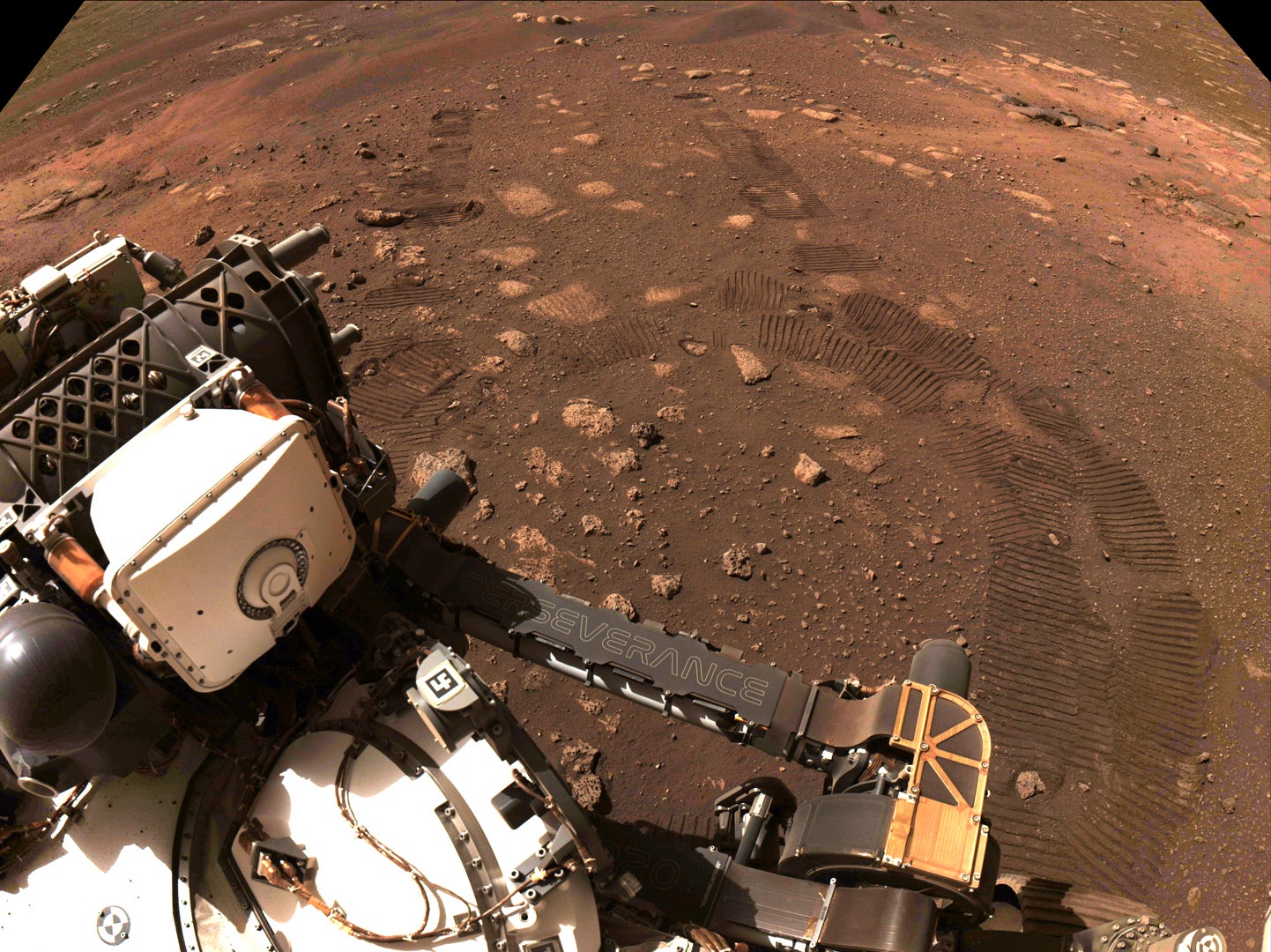NASA's new Mars rover hits dusty red road, 1st trip 21 feet
NASA's newest Mars rover has hit the dusty red road, taking a spin for the first time this week

Your support helps us to tell the story
From reproductive rights to climate change to Big Tech, The Independent is on the ground when the story is developing. Whether it's investigating the financials of Elon Musk's pro-Trump PAC or producing our latest documentary, 'The A Word', which shines a light on the American women fighting for reproductive rights, we know how important it is to parse out the facts from the messaging.
At such a critical moment in US history, we need reporters on the ground. Your donation allows us to keep sending journalists to speak to both sides of the story.
The Independent is trusted by Americans across the entire political spectrum. And unlike many other quality news outlets, we choose not to lock Americans out of our reporting and analysis with paywalls. We believe quality journalism should be available to everyone, paid for by those who can afford it.
Your support makes all the difference.NASA’s newest Mars rover hit the dusty red road this week, putting 21 feet on the odometer in its first test drive.
The Perseverance rover ventured from its landing position Thursday, two weeks after landing on the red planet to seek signs of past life.
The roundabout, back and forth drive lasted just 33 minutes and went so well that the six-wheeled rover was back on the move Friday.
During a news conference Friday, NASA's Jet Propulsion Laboratory in Pasadena California shared photos of the tire tracks over and around small rocks.
“I don't think I've ever been happier to see wheel tracks and I've seen a lot of them, said engineer Anais Zarafian. ”This is just a huge milestone for the mission."
As soon as the system checks on Perseverance are complete, the rover will head for an ancient river delta to collect rocks for return to Earth a decade from now. Scientists are debating whether to take the smoother route to get to the nearby delta or a possibly tougher way with intriguing remnants from that once-watery time 3 billion to 4 billion years ago.
___
The Associated Press Health and Science Department receives support from the Howard Hughes Medical Institute’s Department of Science Education. The AP is solely responsible for all content.